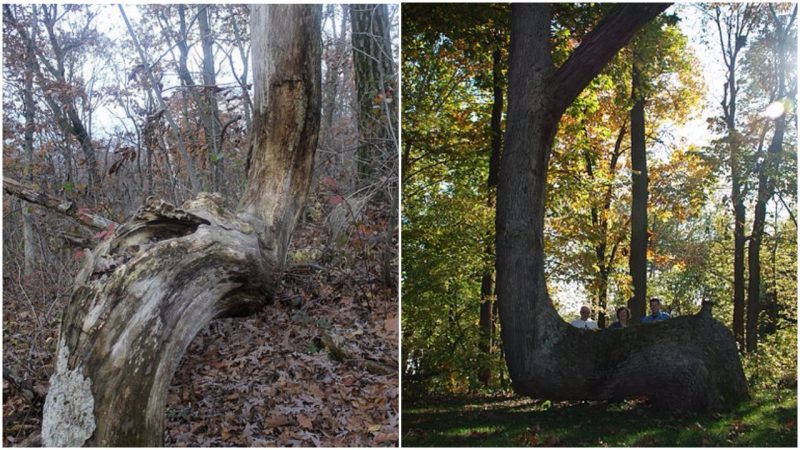Trail Trees, or Crooked Trees, are strangely shaped trees that were purposely bent by early Native Americans as a way to mark a path through the woods.
Dozens of these trail markers exist today all over North America, and there are groups of avid trail tree enthusiasts who seek them out. Trees that take a sharp horizontal bend a few feet off the ground, then shoot straight up again, are often trail trees.
It was the Native Americans used this shape to point the way to everything from fresh water to encampments, or from the right place to cross a river to a more accessible terrain. They may have even pointed the way to good hunting and gathering grounds. Early trail tree makers often used trees that were on high ground so that they could be seen from a distance and as well, if the ground was covered with snow.
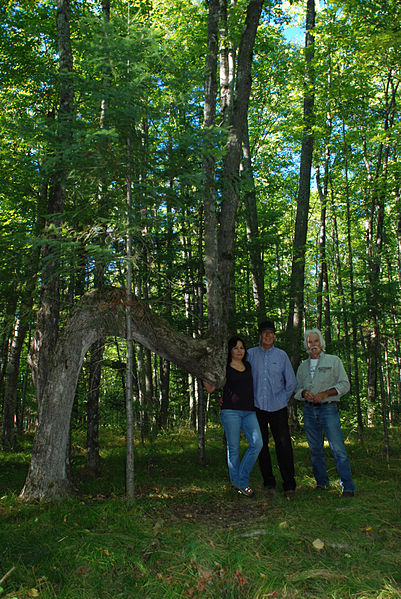
Trail markers were made by bending a hardwood (oak, elm, or maple) sapling and securing its top end to the ground with straps and stakes. The bend would be in the direction of desired travel. With the sapling staked down, the undamaged tree would continue to grow and new branches, not near the ground, would shoot upwards. As soon as the bend in the trunk was mature enough to keep its shape, what was left of the top that hadn’t shot upwards would be chopped off. .’ created a distinctive knob on the end.
However, not every tree you see that looks like it grew funny, is a trail tree. All sorts of things can make a tree grow oddly, like lightning strikes or incidental damage when the tree was a sapling. Furthermore, while many enthusiasts have absolutely no doubt that trail trees are really man-made, there has always been controversy. Not all experts believe these trees were bent on purpose. Nonetheless, and regardless of the origin, bent trees are still being used by hunters and hikers to find their way to this day.
In 1941, paleobotanist Raymond Janssen documented what he found while investigating trail trees. He encountered many crooked trees, but found that only a few were true trail trees, as evidenced by this quote:
“Someone who casually looks for these trail markers tends to have difficulty finding authentic trail markers. Deformed trees can develop in a lot of ways. For example, a bigger tree may fall onto a smaller tree and pin it down for a long period. After this occurs, the smaller tree will have been permanently bent. Another example of tree deformities occurs with lightning strikes. A trunk can become split which creates a leaning tree that “resembles” a true trail marker. Even wind, snow or wildlife can create what seem like Indian markers throughout the trees. So how in the world can you tell what’s authentic and what just looks like a crazy looking tree?”
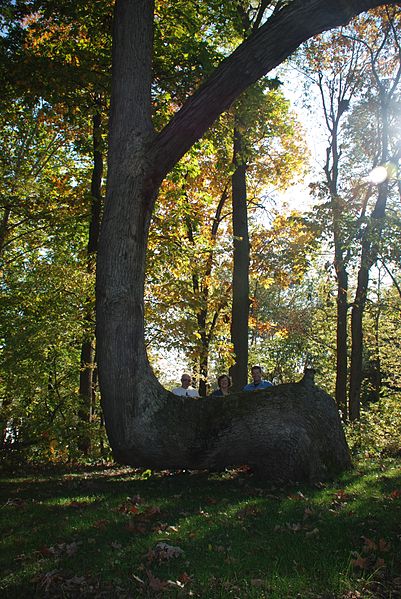
He advises identifying tell-tale scars that show the tree has been abnormally bent to be a good way to spot a real trail tree.
Experts all along the Great Lakes have studied, analyzed, and recorded these Native American oddities since the early nineteenth century. However, documentation exists for these trees all across North America. One trail tree which occurred on the boundary of Mettawa, Illinois, was one of the eleven in a long line of oak trees leading local natives between Highland Park and Lake Geneva, Wisconsin. It had a history of being visited by elder Native Americans and was accounted for in 1934 by Dr. Janssen. Locals and enthusiasts know it as the white oak trail marker tree. Travelers were guided by the trees along a less traveled but important path inside an area that stretched from Highland Park to West Lake Forest. It then led to the Chain of Lakes and Antioch, until finally, it guided travelers to the impressive Lake Geneva, which is in Wisconsin.
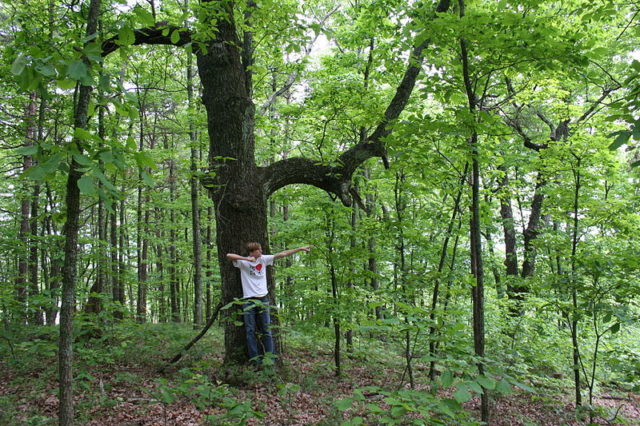
There is another marker tree in Monterey, Tennessee. Monterey was originally named Standing Stone by the Native Americans. The trail tree is now on private property and is one of the two in the area. These days, ceremonies are held that commemorate a proud Native American heritage in which Monterey was established.
A traditional oak trail tree is located in Gilmer County, Georgia. Native Americans of the Appalachian Mountains used it and others along paths in the surrounding areas.
In Traverse City, Michigan, there is a classic trail tree called the White Oak. Traverse City residents have protected it for decades, held ceremonies, and even constructed a fence around the Native American landmark. There are two trail trees in Traverse City Park.
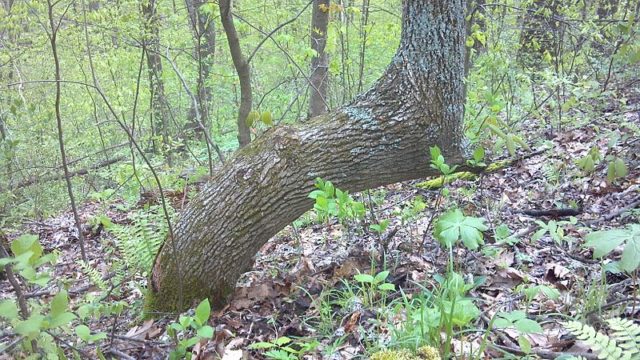
In White County, Indiana, there are two gigantic oak trees that Native Americans bent into trail trees. Both are on private property, and one is believed to be well over three hundred years old. In an impressive demonstration of protecting Native American heritage in Indiana, the trees are well tended by the property owners and supported by the community regularly as well. Much of the earliest research in White County occurred during the area’s 175th anniversary. According to The Indiana Historian, very few trail trees remain in Indiana today, and those are regarded as beautiful gifts of the past. Buffalo Heart, a local Native American, remembers one of the ancient trail trees known as ‘Grandfather’. She told stories of all the trail trees that once stood in the Indiana of her childhood.
There is even a contemporary trail tree in Michigan that was bent in 1930 by two Ojibwa men at the request of a park designer. The intent was to create a modern trail with ancient techniques. Instead of a cement trail, the original trail is marked in the ways of the ancients.
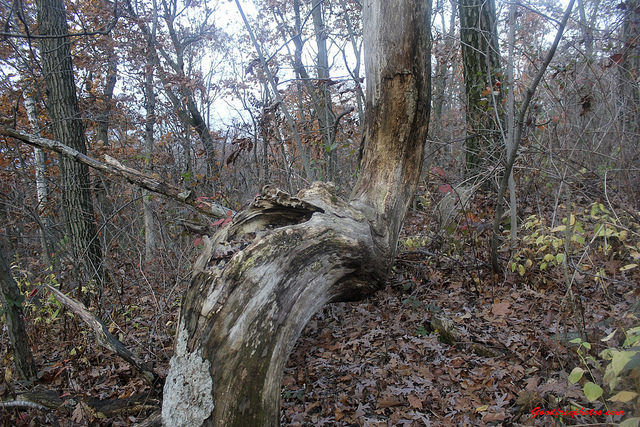
Where there was once a Comanche campsite in Dallas, Texas, there continues to stand a pecan trail tree. This area was once abundant with buffalo and turkey, as well as pecans, plums, and succulent grass for grazing the horses; deer were also plentiful. The tree can now be seen in Gateway Park. Back in 1997, the trail tree was given a Comanche Proclamation by the Chairman of the Comanche Indian Tribe. The proclamation made the tree an official “Indian Marker Tree” through the Constitution of the Comanche Indian Tribe. This was the first time the Comanche tribe had declared any tree as having an official status; they have done so several times since, in the hope that tribal citizens all over Texas would come to celebrate at the ancient trail tree with prayer and ceremony. Tragically, in May of 1998, just a year after the proclamation, the top of the tree was blown down when a severe storm hit the area. The tree’s arborist, Steve Houser, tried in vain to save the tree but to no avail.
This list is by no means exhaustive in naming every trail tree still standing today in North America. If you are out hiking or hunting and spot what you think may be an authentic trail tree, take a picture, then search it in Google to see if you are standing in the midst of the memory of our Native American ancestors.
